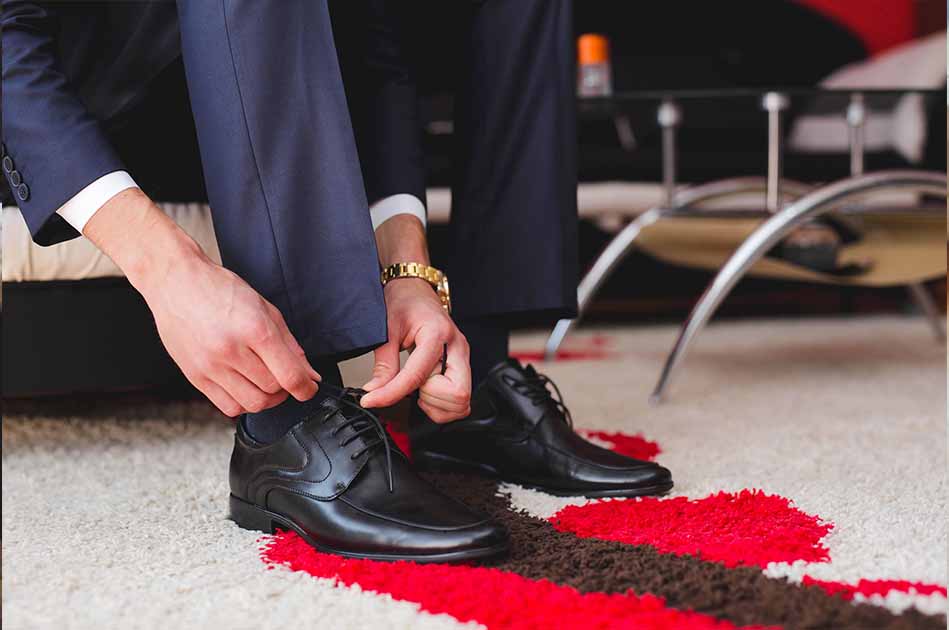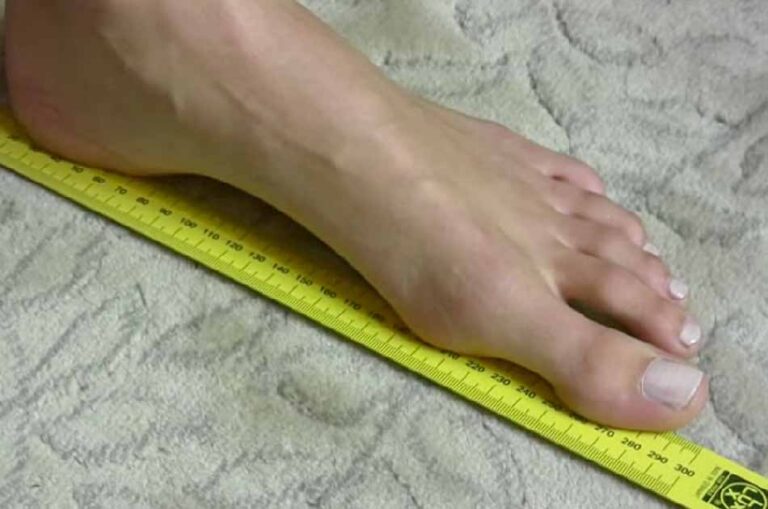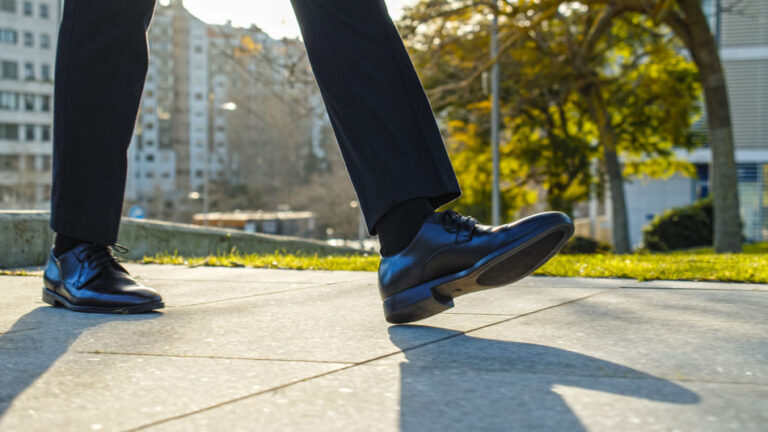Picture this: You’ve just bought a snazzy new pair of shoes. They’re stylish, they’re trendy, and they’re just your size. But the moment you slip them on, something feels off.

They’re either too tight, making you wince with every step, or too loose, making you shuffle around like a penguin. Sound familiar?
Well, my friend, it seems you’ve been overlooking a crucial aspect of shoe shopping – the shoe width. It’s not just about the size; it’s about the width too. And that’s what we’re here to explore today.
Understanding Shoe Sizes and Widths
Let’s start with the basics. When it comes to shoes, size does matter, but it’s not the only thing that counts. Enter the often overlooked, yet equally important, shoe width.
The Size-Width Tango
Shoe sizes are usually what we pay attention to when buying shoes. They’re represented by numbers and vary across different countries.
For instance, a size 9 in the US could be a size 42 in Europe. But here’s the kicker: shoe sizes only account for the length of your foot, not its width.
Now, imagine trying to park a truck in a space meant for a compact car. Not a pretty sight, right?
That’s what happens when you ignore shoe width. Your feet need room to breathe and move, and that’s where shoe width comes into play.
The ABCs of Shoe Widths
Shoe widths are typically denoted by letters ranging from AAA (the narrowest) to EEE (the widest). For men’s dress shoes, D is considered standard or medium width. But remember, just like people, feet come in all shapes and sizes. So don’t fret if you’re an A or an E; there’s a shoe out there for you!
The Science Behind Shoe Widths
Ever wondered how shoe widths are actually measured? Well, it’s not rocket science, but it does involve some nifty footwork (pun intended).
Measuring Up
Shoe widths are determined by measuring the widest part of your foot. This is usually the area across the ball of your foot. The measurement is then compared to a standard chart to determine your shoe width.
Decoding Designations
Shoe widths are usually designated as narrow, medium, or wide. But within these categories, there are subcategories denoted by letters. For instance, in men’s footwear styles, B is narrow, D is medium, and EE is wide.
So there you have it! A crash course in shoe sizes and widths. Remember, finding the perfect fit isn’t just about length; width plays a crucial role too. So next time you’re shopping for comfortable dress shoes or any other footwear, don’t forget to check the width!
How to Measure Your Foot for the Perfect Fit
Alright, now that we’ve got the basics down, let’s get down to business. It’s time to measure your foot. Don’t worry, you won’t need a degree in rocket science for this. Just a tape measure and a little patience.
Step 1: Gather Your Tools
First things first, you’ll need a flat surface, a piece of paper large enough to fit your foot, a pencil, and a tape measure. Got everything? Great! Let’s move on.
Step 2: Trace Your Foot
Place your foot on the paper and trace around it with the pencil. Try to be as precise as possible. Remember, we’re aiming for that perfect fit.
Step 3: Measure Length and Width
Now, measure the length from the heel to the tip of your longest toe. That’s your shoe size. Next, measure the width at the widest part of your foot (usually across the ball of your foot). Voila! You’ve got your shoe width.
Decoding Shoe Size Charts
Now that you have your measurements, it’s time to decode those cryptic shoe size charts. These charts are like secret maps leading you to the treasure trove of comfortable dress shoes.
Understanding Shoe Size Charts
Shoe size charts can seem daunting at first glance with all those numbers and letters. But fear not! They’re actually quite straightforward once you get the hang of it.
The chart will have shoe sizes on one axis and shoe widths on the other. Simply find where your measurements intersect, and you’ve found your shoe size!
So there you have it! A step-by-step guide to measuring your foot and decoding shoe size charts.
Remember, when it comes to shoes, both length and width matter for that perfect fit. So go forth and conquer the world of men’s dress shoes with your newfound knowledge!
Wide Shoes vs Narrow Shoes: What’s the Difference?
Alright, let’s dive into the wide world of shoe widths. You’ve probably seen shoes labeled as ‘wide’ or ‘narrow’, but what does that really mean? Let’s break it down.
The Wide World of Wide Shoes
Wide shoes, as the name suggests, are designed for feet that are broader across the ball of the foot. They offer more room in the toe box, allowing your toes to wiggle freely.
If you’ve ever felt like your men’s dress shoes were squeezing your feet like a boa constrictor, you might want to consider trying a wide shoe.
The Narrow Path of Narrow Shoes
On the flip side, narrow shoes are designed for slender feet. They have less width across the ball of the foot and a snugger fit around the heel and toe box.
If you’ve ever felt like your shoes were too roomy and caused your feet to slide around, a narrow shoe might be your perfect match.
The Goldilocks Principle: Finding Your Perfect Fit
Finding the right shoe width is like a Goldilocks story. Some shoes might feel too tight, others too loose, but when you find that perfect width, it’s just right! So whether you’re a wide-footer or a narrow-footer, there’s a shoe out there that will fit you like a glove…or should I say, a sock?
Remember, finding your perfect fit isn’t just about size; it’s about width too. So next time you’re shopping for comfortable dress shoes, don’t forget to consider the width!
Top Styles in Men’s Dress Shoes for Different Widths
Now that we’ve mastered the art of shoe widths, let’s take a stroll down the runway and explore some top styles in men’s dress shoes suitable for different foot widths. After all, who says comfort can’t be stylish?
The Classic Oxford
Ah, the Oxford. The epitome of elegance and sophistication. With its closed lacing system, it offers a snug fit, making it a great choice for those with narrow feet.
NOTE: Many brands offer Oxfords in wider widths too.
The Versatile Derby
The Derby, with its open lacing system, is a tad more forgiving when it comes to width.
This makes it an excellent choice for those with wider feet. Plus, its versatility means you can dress it up or down depending on the occasion.
The Stylish Loafer
Loafers are slip-ons that scream casual chic. They come in various widths and are perfect for those days when you want to give your feet some breathing room.
So whether you’re a narrow-footer or a wide-footer, there’s a loafer out there just for you.
Common Issues with Ill-Fitting Shoes

Ever tried running a marathon in shoes that don’t fit? Yeah, not a walk in the park, is it? Ill-fitting shoes can lead to a host of problems that go beyond just discomfort. Let’s take a look at some of these issues.
The Trouble with Tight Shoes
Shoes that are too tight, especially in the shoe width, can cause blisters, corns, and calluses. They can also exacerbate conditions like bunions and hammertoes.
If your shoes are leaving your feet feeling like they’ve been in a wrestling match, it might be time to check if you’re wearing the right width.
The Problem with Loose Shoes
On the other end of the spectrum, shoes that are too loose can cause just as many problems. They can lead to friction, which can result in blisters.
Loose shoes also mean your feet are sliding around, which could lead to sprained ankles. Not exactly what you want from your comfortable dress shoes, right?
The Importance of the Perfect Fit
Finding the right shoe width is crucial for foot health. It’s not just about avoiding discomfort; it’s about preventing long-term damage to your feet.
When shopping for men’s footwear styles, remember: size matters, but width does too!
Shoe Width – The Bottom Line
And there you have it! A comprehensive guide to mastering shoe width for the perfect fit.
We’ve journeyed through the world of shoe sizes, widths, and styles, and hopefully, you’re now equipped with the knowledge to find your perfect pair of shoes.
Remember, it’s not just about size; width plays a crucial role too. So next time you’re shopping for men’s dress shoes, don’t forget to consider the width.
Happy shoe hunting!
FAQ
1. What does ‘A’ mean in shoe size?
‘A’ in shoe size refers to a narrow-width shoe. For men, it denotes an extra narrow shoe, while for women, it represents a narrow shoe width.
2. What does ‘AA’ mean in shoe size?
The term ‘AA’ or ‘2A’ is used to label a shoe that is narrower than ‘A’. For men, it’s extra-extra narrow, and for women, it’s extra-narrow.
3. What does ‘AAA’ mean in shoe size?
‘AAA’ or ‘3A’ is used to label the narrowest shoes. This width is usually only available in women’s shoes.
4. What does ‘D’ mean in shoe size?
‘D’ labeled shoes are considered standard width shoes for men and wide width shoes for women.
5. How are shoe widths measured?
Shoe widths are determined by measuring the widest part of your foot, usually across the ball of your foot.
6. How to measure shoe size at home?
You can measure your shoe size at home by tracing your foot on a piece of paper and then measuring the length and width.
7. How to understand shoe size charts?
Shoe size charts have shoe sizes on one axis and shoe widths on the other. Your measurements intersect to find your shoe size.
8. What are wide shoes?
Wide shoes are designed for feet that are broader across the ball of the foot, offering more room in the toe box.
9. What are narrow shoes?
Narrow shoes are designed for slender feet with less width across the ball of the foot and a snugger fit around the heel and toe box.
10. Why is shoe width important?
Shoe width is crucial for foot health as ill-fitting shoes can lead to blisters, corns, calluses, and other foot health issues.


